 Is there an installment of the James Bond series with a less flattering reputation than 1979’s Moonraker? Frequently labeled the worst of the worst, it’s time for another look at the popcorn bonanza that launched Bond into outer space and Roger Moore into camp infamy.
Is there an installment of the James Bond series with a less flattering reputation than 1979’s Moonraker? Frequently labeled the worst of the worst, it’s time for another look at the popcorn bonanza that launched Bond into outer space and Roger Moore into camp infamy.Any talk of Moonraker must begin with the pre-credits sequence, which features the most magnificently jaw(s)-dropping stunt ever performed in a 007 outing: Aboard a private jet, Bond’s busy puttin’ the moves on some babe who quickly reveals herself to be less than charmed by pulling a gun on him. The pilot emerges from the cockpit decked out in skydiving gear. Taking the gun from the girl, he hands her a parachute and proceeds to blast the navigation equipment to pieces.
Evil Pilot: “This is where we leave you, Mr. Bond.”
Bond: “A little premature, isn't it?”
Bond and Evil Pilot scuffle, the door opens…and Bond pushes Evil Pilot out of the plane. 007’s victory is short-lived, however, as he too is pushed out the door by the previously unseen Evil Co-Pilot -- Jaws (Richard Kiel)! And that’s when the sequence really begins…
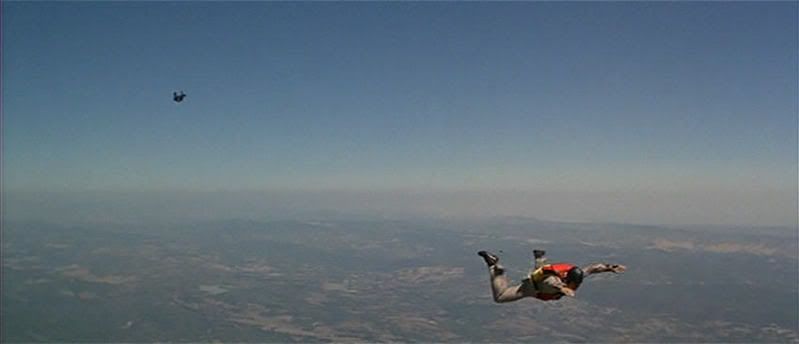
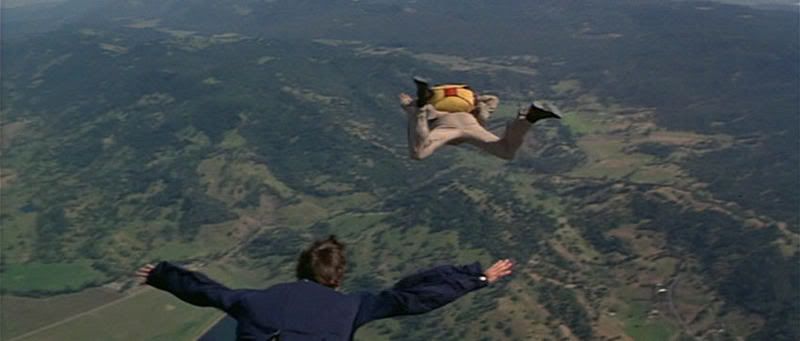
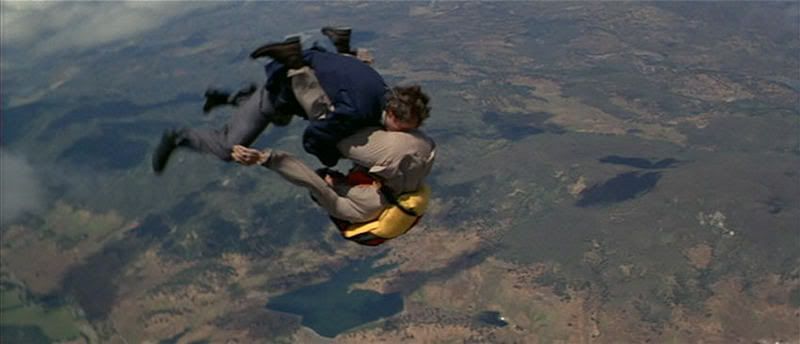
Bond navigates his way sans ‘chute towards Evil Pilot. The pair scuffle for considerably longer this time, in mid-air, as Bond relentlessly fights to remove Evil Pilot’s parachute. (Does the bizarre shot of Bond’s nose nestled in Evil Pilot’s crotch tell us more about James than we ever wanted to know?) This entire fight is a beauty to behold and the jewel in the Bond stunt crown.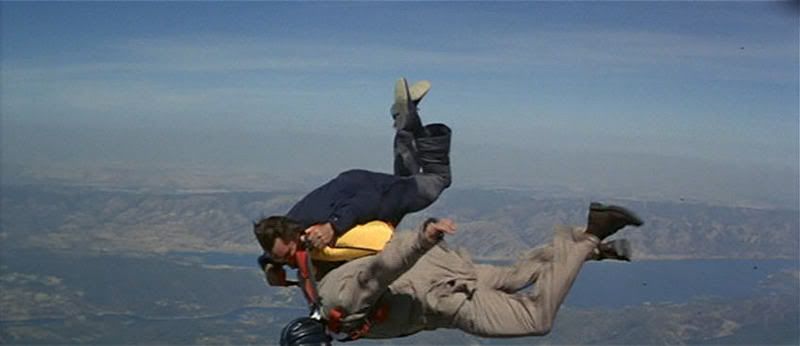
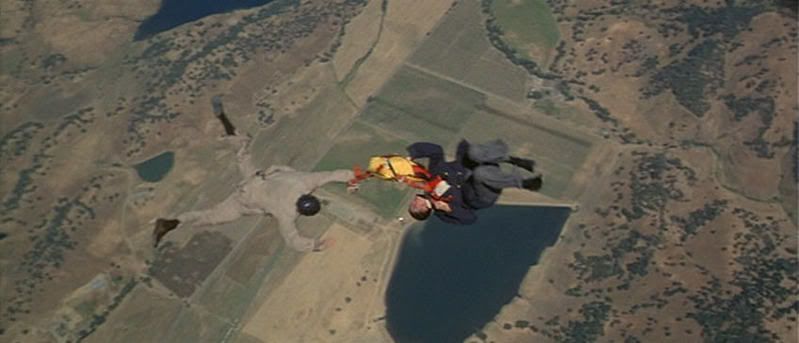

Once Bond snags the chute, Evil Pilot trails away into the atmosphere to meet his maker (clenching his fists at 007 all the way), Round Two begins. Jaws shows up behind James and attempts to sink his tinfoil teeth into Bond's leg, but not before James activates his chute, pulling him to safety. Jaws discovers his chute doesn’t work and crashes to safety through a circus tent on the ground below. (Despite the fact she was seen being given a parachute, we never really find out what happened to the girl.)
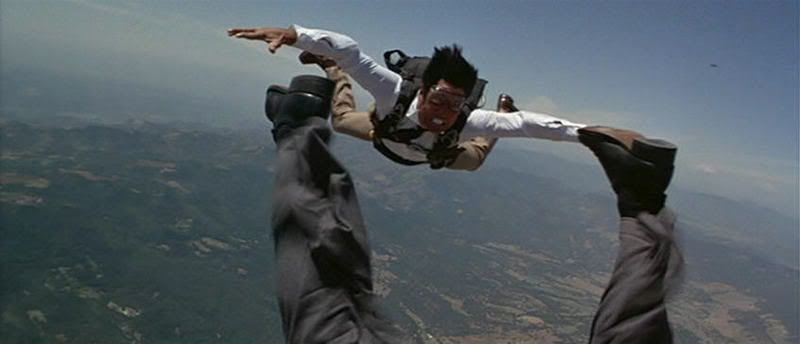

While this skydiving sequence has a few problems (i.e. the obvious stuntmen and the goggles Bond is magically wearing), the sheer thrill and spectacle make up for any minor shortcomings. It’s the kind of stuff that cemented Moore’s era as its own.
Tuneage and Credits Sequence: Maurice Binder’s work on the various ‘70s Moore movies is collectively my favorite. He was getting away with showcasing loads of sexy, silhouetted flesh – often dancing with R-rated imagery - and Moonraker is no different (though it does seem a mild attempt to duplicate the perfection of The Spy Who Loved Me’s credits). There’s a bit of dated animation in the mix, but the plethora of bouncing babes makes up for it.
Given the film’s sci-fi premise, the title tune feels too retro due to the recognizable presence of Shirley Bassey’s vocals. Her style is much more at home with her two Connery numbers and this feels like a case of “trying to go home”. 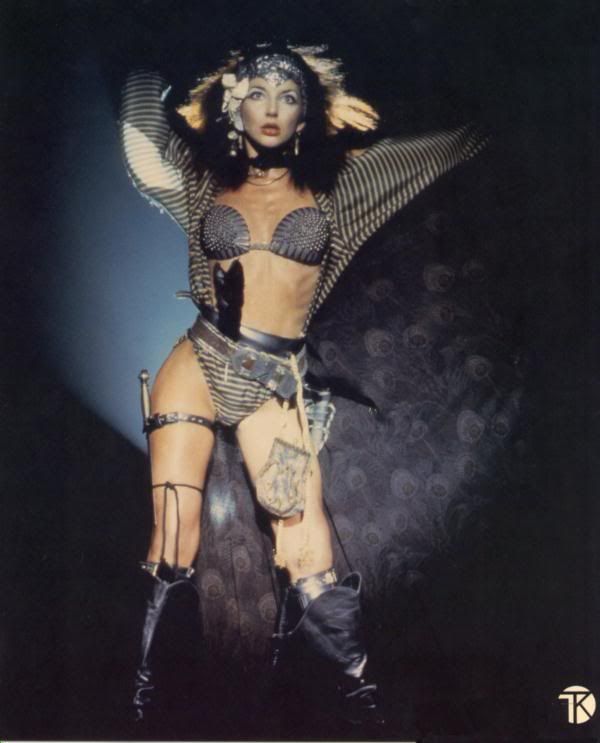 The song was apparently offered to Kate Bush before Bassey and she supposedly turned it down (argh!). Kate’s vocal style would have been an inspired match for John Barry’s songwriting and Hal David's lyrics and as a Kate fanatic, I’m incapable of hearing "Moonraker" without dreaming of what might have been. The disco spin on the tune that plays over the end credits seems totally out of place with the rest of Barry’s score, which is pleasingly lush, accentuating the scope of Moonraker’s locations and the vastness of its premise. Interesting to note the movies that bookend Moonraker were not scored by Barry. (It bears worth repeating The Rued Morgue Disclaimer #1: Ross is lousy at writing about music.)
The song was apparently offered to Kate Bush before Bassey and she supposedly turned it down (argh!). Kate’s vocal style would have been an inspired match for John Barry’s songwriting and Hal David's lyrics and as a Kate fanatic, I’m incapable of hearing "Moonraker" without dreaming of what might have been. The disco spin on the tune that plays over the end credits seems totally out of place with the rest of Barry’s score, which is pleasingly lush, accentuating the scope of Moonraker’s locations and the vastness of its premise. Interesting to note the movies that bookend Moonraker were not scored by Barry. (It bears worth repeating The Rued Morgue Disclaimer #1: Ross is lousy at writing about music.)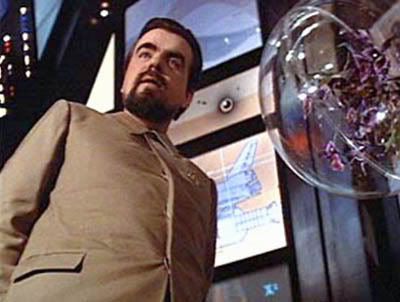 Zee Villain: French actor Michael Lonsdale’s Sir Hugo Drax is unengagingly realized, lifelessly stock and blandly cut from the most common slab of cardboard. The sum total of Drax is his villainy, his technology and his plans. With its focus on spectacle, the Moore era featured some of the least interesting villains and Drax is the weakest of the weak. He's a forgettable bad guy brought to non-life by a phoned-in performance....yet it doesn’t really hurt the film; Moonraker isn't about characterization nor does it even aspire to be.
Zee Villain: French actor Michael Lonsdale’s Sir Hugo Drax is unengagingly realized, lifelessly stock and blandly cut from the most common slab of cardboard. The sum total of Drax is his villainy, his technology and his plans. With its focus on spectacle, the Moore era featured some of the least interesting villains and Drax is the weakest of the weak. He's a forgettable bad guy brought to non-life by a phoned-in performance....yet it doesn’t really hurt the film; Moonraker isn't about characterization nor does it even aspire to be.
While Drax the man may be a minus for Moonraker, his scheme – which seems inspired by one too many viewings of 2001 and the maddening thinking that might occur from the inability to figure it all out -- is a big plus. Drax is Hitler without the appreciation for art & history: Wipe out the flawed human race and start over in space. It’s through this comic book conceit that Moonraker scales memorable heights, both thematically and literally. Zee Henchman: While Moore’s era may not have fared well in the Villain Department, it created some pretty memorable henchmen. Richard Kiel’s Jaws was the only villainous lackey who lived to see another movie (having hounded 007 in the previous film, The Spy Who Loved Me). Here, Jaws is played more for laughs than in the previous outing, but given the comic book feel of the proceedings, its never obtrusive and his continual hounding of Bond from one scene to the next is one of the film’s most successful aspects (the cable car fight is undeniably a highlight).
Zee Henchman: While Moore’s era may not have fared well in the Villain Department, it created some pretty memorable henchmen. Richard Kiel’s Jaws was the only villainous lackey who lived to see another movie (having hounded 007 in the previous film, The Spy Who Loved Me). Here, Jaws is played more for laughs than in the previous outing, but given the comic book feel of the proceedings, its never obtrusive and his continual hounding of Bond from one scene to the next is one of the film’s most successful aspects (the cable car fight is undeniably a highlight). 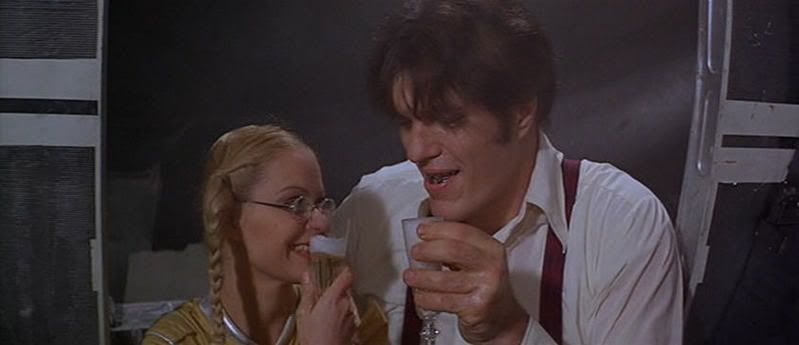 In the finale, Jaws realizes Drax’s master plan wouldn’t include the freakish ilk of either he or his new love, Dolly (Blanche Ravalec), so he turns and helps James win the day. In his last scene, he pops open a champagne bottle with his teeth, toasts the future with Dolly, and speaks his only line of dialogue in either movie: “Well, here’s to us.”
In the finale, Jaws realizes Drax’s master plan wouldn’t include the freakish ilk of either he or his new love, Dolly (Blanche Ravalec), so he turns and helps James win the day. In his last scene, he pops open a champagne bottle with his teeth, toasts the future with Dolly, and speaks his only line of dialogue in either movie: “Well, here’s to us.” Les Girls: Dr. Holly Goodhead (Lois Chiles) is the central Bond babe, but the producers cast Corinne Clery in the smaller part of Drax’s assistant Corinne Dufour. As one of the truly sexy babes of erotic cinema -- due mostly to The Story of O -- Clery’s mere presence overshadows Chiles, despite having a fraction of the screentime and a dubbed performance. If only the actresses’ roles had been reversed! (Granted, that's a wholly subjective observation and subsequent wish.)
Les Girls: Dr. Holly Goodhead (Lois Chiles) is the central Bond babe, but the producers cast Corinne Clery in the smaller part of Drax’s assistant Corinne Dufour. As one of the truly sexy babes of erotic cinema -- due mostly to The Story of O -- Clery’s mere presence overshadows Chiles, despite having a fraction of the screentime and a dubbed performance. If only the actresses’ roles had been reversed! (Granted, that's a wholly subjective observation and subsequent wish.) Before Moonraker, Chiles was supposedly considered for Anya Amasova in The Spy Who Loved Me, but was otherwise engaged. Lucky for the actress she got a second chance. Although Goodhead is something of a cold fish with a bland demeanor it doesn't feel out of place due to her being a scientist and a CIA agent. Chiles is quite striking and from a looks standpoint it's easy to see why she was cast, yet every time she speaks Holly becomes a little less captivating.
Before Moonraker, Chiles was supposedly considered for Anya Amasova in The Spy Who Loved Me, but was otherwise engaged. Lucky for the actress she got a second chance. Although Goodhead is something of a cold fish with a bland demeanor it doesn't feel out of place due to her being a scientist and a CIA agent. Chiles is quite striking and from a looks standpoint it's easy to see why she was cast, yet every time she speaks Holly becomes a little less captivating.
Bond, James Bond: One of the most refreshing aspects of Roger Moore’s commentary tracks on the Ultimate Edition DVDs is his self-deprecating approach. He never stands on ceremony and doesn’t pretend to be some great actor. Moonraker is the outing in which Moore has the least to do from a character standpoint, and James spends the movie hopping from one outlandish situation to the next. (At one point he even ends up improbably disguised as Eastwood’s Man With No Name with the theme from The Magnificent Seven offering accompaniment.)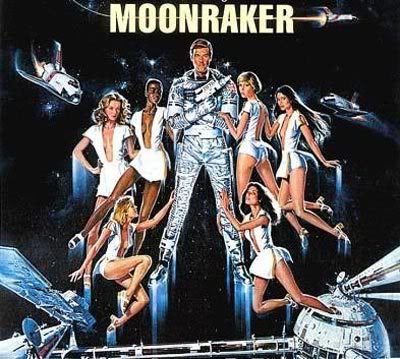 While writing this piece, it began to feel like a rehash of the Tomorrow Never Dies overview, yet a major difference between the films is the two leads: Brosnan is a great actor capable of heights he was rarely allowed to scale; Moore was the opposite – an actor of limitations, ideally suited to take on even the most shallow of scripts (where Moonraker easily lands). His double takes, line delivery and attitude make it work. Whatever misgivings people may have about Roger Moore, Moonraker proves he was the right Bond for his time and why he lasted so long in the part.
While writing this piece, it began to feel like a rehash of the Tomorrow Never Dies overview, yet a major difference between the films is the two leads: Brosnan is a great actor capable of heights he was rarely allowed to scale; Moore was the opposite – an actor of limitations, ideally suited to take on even the most shallow of scripts (where Moonraker easily lands). His double takes, line delivery and attitude make it work. Whatever misgivings people may have about Roger Moore, Moonraker proves he was the right Bond for his time and why he lasted so long in the part.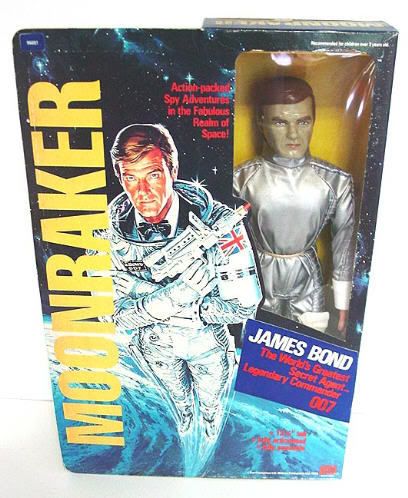 The Bond series has over the years learned to compete in a marketplace that’s learned how to successfully rip off Bond. Spurred on by the success of 1977's The Spy Who Loved Me, Albert Broccoli seemingly decided to do some shameless ripping of his own with Moonraker (including the structure of Spy's script). The industry was changing. Star Wars and Close Encounters were all the rage and The Empire Strikes Back was only a year away. Merchandising had become a major component of blockbuster filmmaking. Although the end of Spy announced “James Bond will return in For Your Eyes Only”, a decision was made to put Eyes on the backburner and have 007 engage in a star war of his own. Moonraker’s budget was astronomical for 1979 -- $34,000,000! By comparison Spy was only $14,000,000, Empire’s was a paltry $18,000,000 and in ‘83 Jedi was still only $32,000,000.
The Bond series has over the years learned to compete in a marketplace that’s learned how to successfully rip off Bond. Spurred on by the success of 1977's The Spy Who Loved Me, Albert Broccoli seemingly decided to do some shameless ripping of his own with Moonraker (including the structure of Spy's script). The industry was changing. Star Wars and Close Encounters were all the rage and The Empire Strikes Back was only a year away. Merchandising had become a major component of blockbuster filmmaking. Although the end of Spy announced “James Bond will return in For Your Eyes Only”, a decision was made to put Eyes on the backburner and have 007 engage in a star war of his own. Moonraker’s budget was astronomical for 1979 -- $34,000,000! By comparison Spy was only $14,000,000, Empire’s was a paltry $18,000,000 and in ‘83 Jedi was still only $32,000,000.
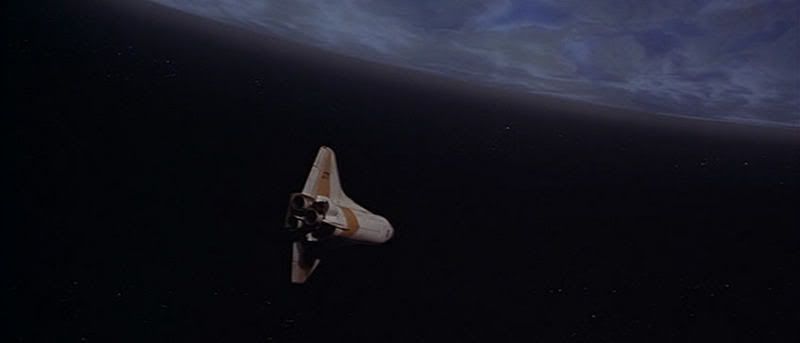

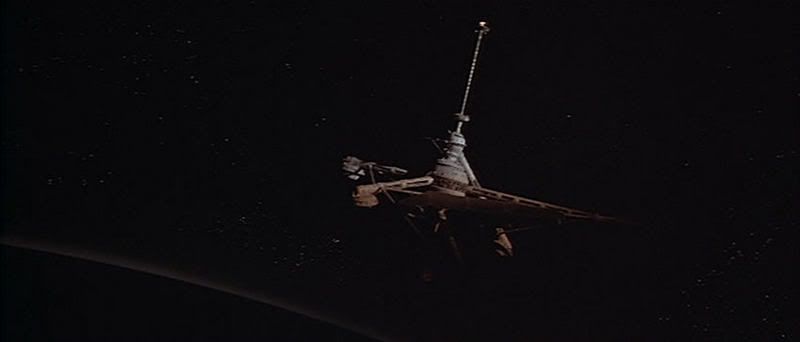
Moonraker’s goal was to take Bond into space, which it more than delivers. The space finale is Star Wars meets 2001 – an epic battle replete with ships, astronauts, laser guns and just about every single cliché imaginable thrown into such a scenario, including having Drax dispatched via an airlock. As my blogger bud Jeffrey pointed out, Moonraker’s really a parody – it parodies the previous Bond films and the finale parodies sci-fi. But any parody worth doing also loves and respects the material it exploits, and Moonraker's third act is drunk on popcorn science fiction. There’s a majestic beauty on display in between the laser beams and it somehow manages to echo the Lucas and Kubrick epics without ever even aspiring to those films' heights.

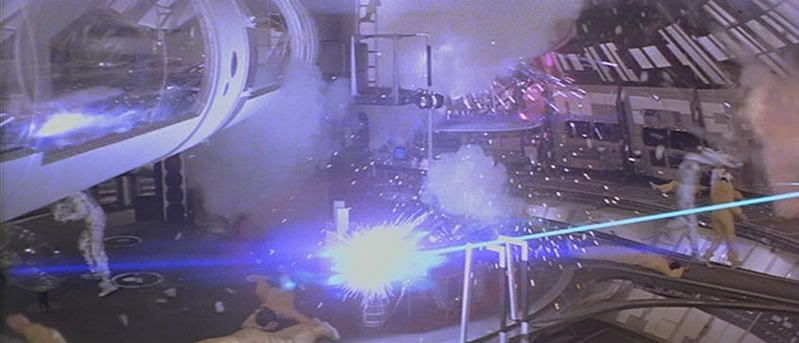
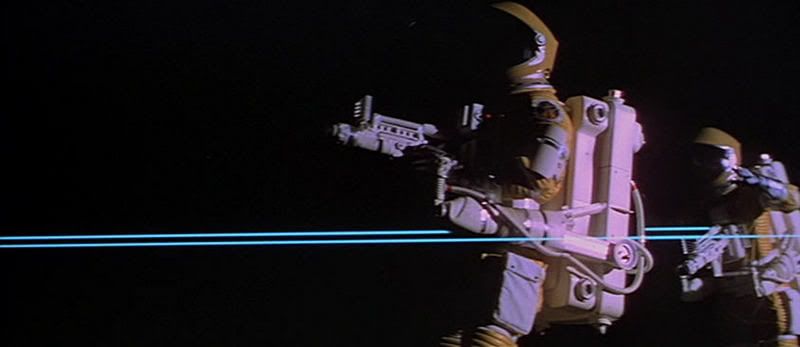
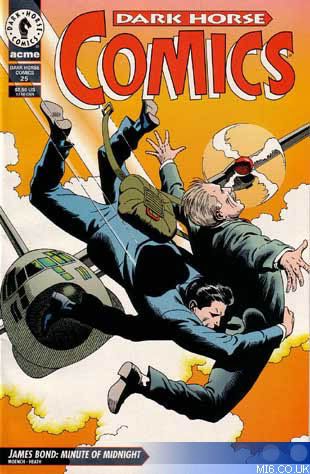 It isn’t hard to see why Moonraker is so often ridiculed; if the previous Moore movies had already hammered in a few nails, this one sealed the coffin on Connery’s golden age. By the time it reaches its finale, you’ve either submitted to its charms or lost all interest. The key to “getting” the movie is the same as appreciating any comic book -- basking in the pictures…and Moonraker overflows with sumptuous imagery. If one were deprived of the film's dialogue & plot mechanics and only listened to its score and wallowed in the photography, effects and locations, one might wonder exactly why so much derision surrounds the piece.
It isn’t hard to see why Moonraker is so often ridiculed; if the previous Moore movies had already hammered in a few nails, this one sealed the coffin on Connery’s golden age. By the time it reaches its finale, you’ve either submitted to its charms or lost all interest. The key to “getting” the movie is the same as appreciating any comic book -- basking in the pictures…and Moonraker overflows with sumptuous imagery. If one were deprived of the film's dialogue & plot mechanics and only listened to its score and wallowed in the photography, effects and locations, one might wonder exactly why so much derision surrounds the piece.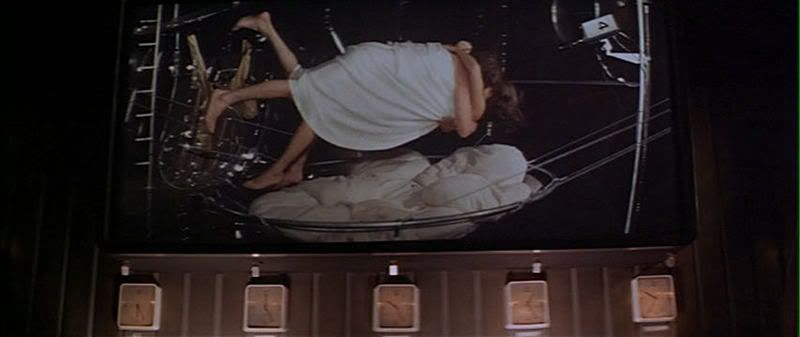 Sir Frederick Gray: “My God, what's Bond doing?”
Sir Frederick Gray: “My God, what's Bond doing?”Q: “I think he's attempting re-entry, sir.”
Some interesting trivia:
* Moonraker was filmed on three continents, in four studios, and across seven countries.
* To build the gigantic three level Space Station set interiors at France's Epinay Studios, the production utilized two tons of nails, one hundred tons of metal, two hundred and twenty technicians and ten thousand feet of set construction woodwork.
* Vehicles featured included NASA / Rockwell International Shuttle Spacecraft designs as the six Moonraker Space Shuttles; a Venezian Gondola that can turn into a hovercraft known as the Hovercraft Gondola or 'Bondola'; Q's Hydrofoil Boat, a Glastron speedboat with attached hang-glider; a white MP Roadster; a Rio de Janeiro Ambulance; a blue Rolls-Royce Silver Wraith II which takes Bond to his Rio hotel; a Bell 206 Jet Ranger helicopter; a Hispano-Suiza; and a Handley Page Jetstream Turboprop plane in the opening sequence.
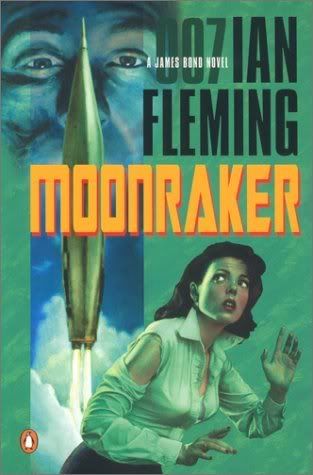
* The film had the largest number of actors in weightlessness (on wires) ever filmed.
* For the fight between James Bond and Chang, the film had the largest amount of break-away sugar glass used in a single scene.
* The film utilized the largest set ever built in France.
* The final Bond film to feature Bernard Lee as M. He’d played the part in every entry since Dr. No.
Major kudos to fellow Bondphile Jeffrey of Liverputty and House Next Door fame for helping me out with all the great screen captures for this piece.
